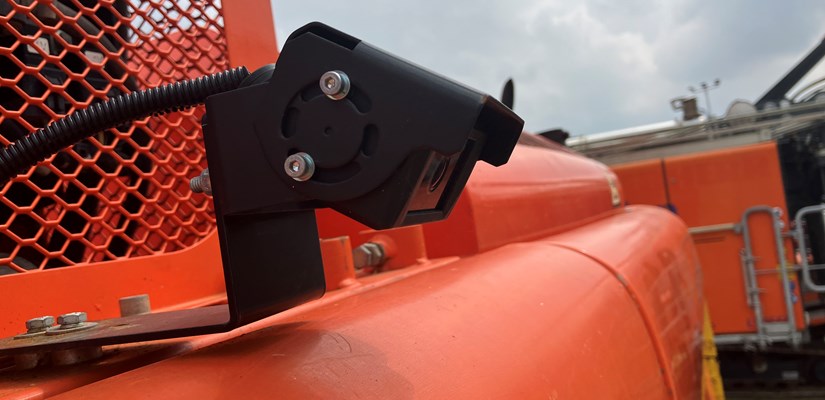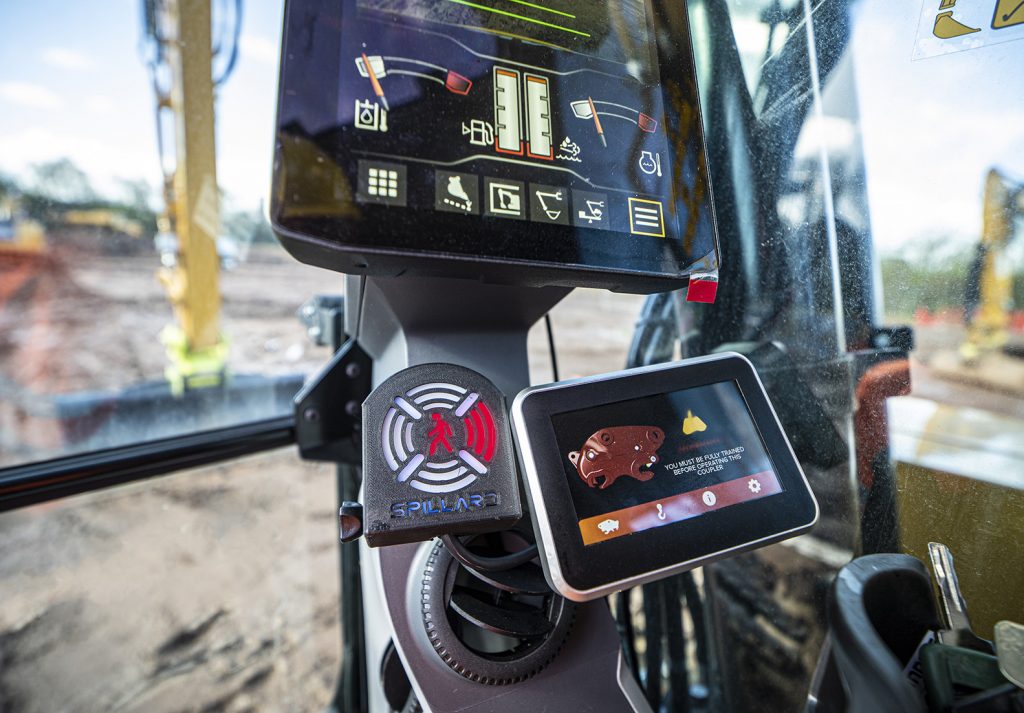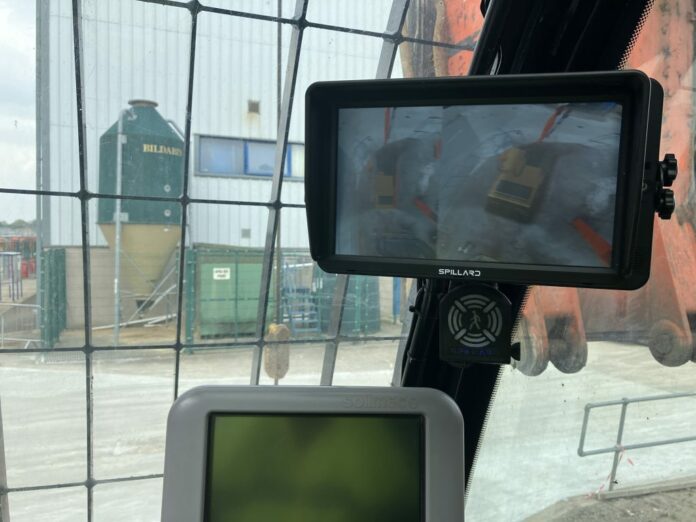The construction industry is no stranger to hazards, with accidents involving moving plant machinery posing a significant risk to worker safety. In response to this critical need, the integration of AI-backed human form recognition technology represents a groundbreaking advancement in construction site safety This technology, leveraging advanced AI and deep learning algorithms, provides real-time detection and alert systems that significantly reduce the risk of accidents involving vehicles or heavy machinery. As firms increasingly recognize the value of proactive hazard detection, enhanced situational awareness, and real-time data insights, the adoption of these systems is expanding rapidly. This shift not only improves worker safety but also drives operational efficiency, leading to a broader global embrace of AI-driven safety solutions.

Understanding the Technology: AI-backed Human Form Recognition
AI-backed human form recognition technology represents a significant advancement in construction site safety, leveraging cutting-edge artificial intelligence algorithms to enhance hazard detection and risk mitigation. At its core, this technology relies on a combination of sophisticated hardware and software components to identify and track human forms within construction environments.
Hardware Components:
The hardware components of AI-backed human form recognition systems typically consist of high-resolution cameras strategically mounted on construction machinery. These cameras are designed to capture detailed imagery of the surrounding environment, providing a comprehensive view of potential safety hazards. In addition to standard visible light cameras, some systems may also incorporate infrared or thermal imaging cameras to enhance detection capabilities in low-light conditions or adverse weather.
Software Algorithms:
The software algorithms powering AI-backed human form recognition systems are the backbone of their functionality. These algorithms utilize advanced machine learning and deep learning techniques to analyze the visual data captured by the cameras in real-time. Through extensive training on large datasets of human body images, the algorithms can accurately distinguish between human forms and other objects or background elements within the construction site.
Detection and Tracking:
Once deployed, AI-backed human form recognition systems continuously monitor the construction site for any human presence. When a human form is detected within the field of view of the cameras, the system initiates a series of automated responses to mitigate potential safety risks. This may include alerting the machinery operator, activating warning signals or alarms, and even autonomously halting machinery operations to prevent accidents.
Adaptability and Customization:
One of the key strengths of AI-backed human form recognition technology lies in its adaptability and customization capabilities. These systems can be configured to suit the specific requirements of different construction projects, taking into account factors such as the type of machinery involved, the layout of the construction site, and the nature of the work being performed. This flexibility ensures that the technology can seamlessly integrate into existing workflows and safety protocols without disrupting productivity.
Integration with Other Systems:
AI-backed human form recognition systems are designed to complement and enhance existing safety systems and protocols rather than replace them entirely. They can be integrated with other technologies such as proximity sensors, collision avoidance systems, and telematics platforms to provide a comprehensive safety solution. By sharing data and coordinating responses in real-time, these integrated systems can provide multiple layers of protection against accidents and injuries on construction sites.
In regard to the growing trend, Cementation Skanska, a prominent player in the construction industry, has embarked on a journey to redefine safety standards through the integration of cutting-edge technology, known as the Spillard Live platform—a comprehensive solution for proactive safety management. This intuitive platform serves as the nerve centre of the safety infrastructure, facilitating seamless communication and data exchange between system components, site teams, and a centralised control hub.

Addressing a Critical Need: Mitigating Contact with Moving Plant
Contact with moving plants is one of the main causes of potential fatalities on UK construction sites. Health and Safety Executive data paint a stark picture, revealing an average of seven fatalities annually stemming from accidents involving vehicles or moving plants. Cementation Skanska,wants to address this issue by mandating the installation of AI-backed human form recognition cameras on its fleet of large diameter piling rigs and cranes.
Cementation Skanska Managing Director Andy Entwistle said: “The significant risk posed by physical contact between people and plants is well recognised in the UK construction industry. “We are determined to do all that we can to reduce and eliminate risks from our sites. Through our collaboration with Spillard Safety Systems, we have been able to develop an approach to configuring and installing these 360⁰ cameras that will support safer ways of working”, he added.
Innovative Features Redefining Construction Site Safety
Spillard Safety Systems’ Human Detection System represents a paradigm shift in construction site safety, offering a suite of innovative features designed to mitigate risks and enhance worker well-being. These cutting-edge features not only address existing safety challenges but also anticipate future needs, setting a new standard for safety excellence in the construction industry.
1. AI-backed Human Form Recognition Technology:
At the core of the Human Detection System lies advanced artificial intelligence (AI) algorithms, capable of recognizing human forms and objects in real-time. This groundbreaking technology enables proactive hazard detection, allowing the system to automatically suspend machinery operations and sound alarms upon detecting individuals or objects encroaching into designated exclusion zones.
2. Comprehensive 360⁰ Visibility:
Operators are equipped with a comprehensive 360⁰ view of the machine’s surroundings through in-cab screens. This feature enhances situational awareness, empowering operators to swiftly identify and respond to potential risks within their operational environment. Additionally, external digital displays enable operators to communicate with nearby personnel, facilitating coordination and safety measures on-site.
3. Customizable Detection Zones:
The Human Detection System offers flexible configuration options, allowing detection zones to be tailored to specific plant types, work activities, and environmental conditions. This customization ensures optimal performance and effectiveness, enabling the system to adapt seamlessly to diverse work environments and operational requirements.
4. Real-time Data Transmission and Analysis:
Data collected by the Human Detection System is transmitted in real-time to site teams and a central control hub through the Spillard Live intuitive platform. This enables dynamic rule optimization, facilitating proactive risk management and ensuring timely intervention in the event of potential hazards. Moreover, the system provides video footage of incidents, date/time, and location details, empowering site teams with valuable insights for safety planning and decision-making.
5. Operator-Friendly Interface:
The Human Detection System features an intuitive interface designed with operator usability in mind. Operators benefit from user-friendly controls and interfaces, reducing the risk of distractions and enhancing operational efficiency. Additionally, the system’s automated functionality minimizes reliance on operator intervention, further streamlining workflow processes and maximizing safety measures.
6. Proximity Alerts and Alarms:
The system is equipped with proximity sensors that trigger audible alarms and visual alerts when individuals or objects enter predefined danger zones. These alerts serve as immediate warnings to both operators and nearby workers, facilitating quick response and risk mitigation.
7. Dynamic Obstacle Avoidance:
In addition to detecting static hazards, such as barriers or structures, the system employs dynamic obstacle avoidance technology. This enables the system to identify and react to moving objects in real-time, minimizing the risk of collisions or accidents caused by unexpected obstacles.
8. Integration with Telematics Systems:
The Human Detection System seamlessly integrates with telematics systems, allowing for centralized monitoring and data analysis. By integrating with existing fleet management platforms, operators and site managers gain access to comprehensive insights into safety performance, enabling informed decision-making and continuous improvement efforts.
9. Remote Monitoring and Control:
Remote monitoring capabilities enable supervisors and safety officers to monitor construction sites from a centralized location. Through live video feeds and real-time data updates, stakeholders can remotely assess safety conditions, intervene when necessary, and provide guidance to on-site personnel, enhancing overall safety oversight.
10. Maintenance and Diagnostics Reporting:
The Human Detection System includes built-in diagnostic tools that monitor system health and performance. Maintenance alerts and reports provide operators and maintenance personnel with valuable insights into system functionality, facilitating proactive maintenance and ensuring optimal performance over time.

Conclusion
Cementation Skanska’s adoption of AI-backed human form recognition technology marks a monumental leap forward in construction site safety. By harnessing cutting-edge solutions, the company exemplifies a steadfast commitment to safeguarding its workforce while optimizing operational efficiency. As the construction industry embraces innovation and collaboration, the future promises a safer, more secure environment for all stakeholders involved.
References- geplus.co.uk, skanska.co.uk, spillard.com


